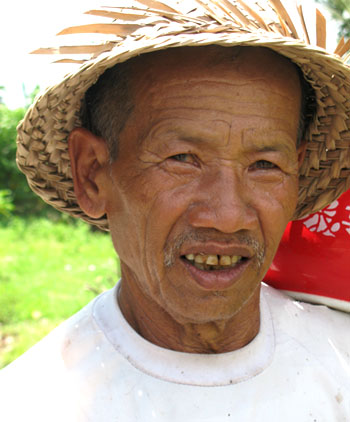
Debate as to whether the coup might have been staged or manipulated with support of the West has rumbled on for decades and these leaked autopsy documents challenge the official version of what happened to the generals. The reports, signed by five doctors, suggest that the victims’ bodies were ridden with bullets but had not been mutilated. While the authenticity of these documents has yet to be verified, the appearance of IndoLeaks has led to speculation that more documents may emerge to throw light on this darkest periods of Indonesia’s history when, in the wake of the coup attempt the then head of the Army’s Strategic Reserve, General Suharto, took control and presided over what the a CIA report described as “one of the worst mass murders of the twentieth century.”
Details of the massacres and the extent to which Western governments were complicit in allowing them to occur have never been openly aired. Declassified intelligence documents have shown that in 1965 the United States gave Suharto lists of suspected communist who were subsequently killed. A CIA memorandum claims that in 1962 Prime Minister Harold Macmillan and President Kennedy agreed “to liquidate President Sukarno.” In Indonesia all public discussion of the killings was forbidden and this period of Indonesia’s history was carefully rewritten. Even today, twelve years after Suharto was deposed and forty years since the massacres, Indonesia is still struggling to come to terms with this bloody period. There has been no official acknowledgment of the killings. No one has been brought to account and no redress or restitution has been offered to the victims and their families.
Sixty-five year old Nyoman Ramin was just twenty years old when soldiers marched into his village in Bali with 42 prisoners – men aged between about twenty and fifty. “The men were made to sit right here with their hands tied and their legs dangling down into the grave” he tells me indicating a patch of grass beside the road in the picturesque Balinese village of Petulu. “I was watching from over there in front of the temple” says Ramin. “A solider walked slowly around behind the prisoners shooting each of them in the back of the head. Some of them were crying and I remember one older man had a heart attack and fell into the grave even before the soldier got to him.”
Ramin’s story is far from uncommon. Between October 1965 and March 1966 suspected members or sympathizers of the PKI were rounded-up and taken from one village to another by soldiers or local militias where they were shot or butchered with machetes. As with Petulu, the graves were often dug in the local cemetery with a member of each family in the village – commonly young men like Nyoman Ramin – ordered to dig the graves and watch the executions. Those who refused to help identify people on the lists and take part in the killings risked being branded communists themselves. In those six months an estimated 80,000 people, roughly 5 percent of Bali’s population, were killed. “On Java we had to urge people to kill communists but on Bali we had to stop them” one of Suharto’s generals is reported to have said.
In 2004 legislation was passed with a view to establishing a Truth and Reconciliation Commission (TRC) to investigate, compensate, and resolve many human rights violations that occurred during Suharto’s regime. But in 2006 Indonesia’s Constitutional Court ruled that the law was unconstitutional and although another draft law has been prepared by the Justice and Human Rights
Ministry, there seems little political will to enact this law.
While Indonesia has made significant progress in its transition to democracy since the downfall of Suharto, boasting a free press as well as a body of new human rights legislation, its failure to address the bloodiest aspects of its recent past are problematic. For a country emerging from a period of authoritarianism, establishing transitional justice mechanisms is an important part of the nation-building and post-conflict recovery process. The country’s increasingly active censors are particularly sensitive about films that attempt to tackle this period and in 2007 new history textbooks which discussed the massacres and challenged the established view that the PKI were behind the 1965 coup were confiscated by the Attorney General. Many young Indonesians are ignorant about what happened in 1965 and those generations who bore witness to it are rapidly disappearing.
“Indonesians have a funny view of history,” Dr Nono Makarim former editor-in-chief of the Harian Karmi newspaper tells me. “It is a cyclical view, like stories in the shadow puppet theatre. Indeed, there is no interest in the past.” But with IndoLeaks and WikiLeaks both revealing new details of the Suharto period and a Freedom of Information Act recently enacted it is likely that Indonesians will have to start coming to terms with some of the less savory aspects of their past. Details of the role played by America and Britain in that past will not make for very pretty reading.
Stefan Simanowitz is a writer, journalist and human rights campaigner. He recently returned from Indonesia.
